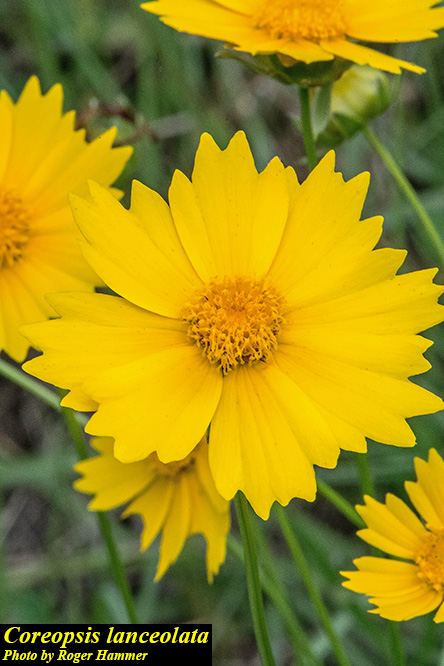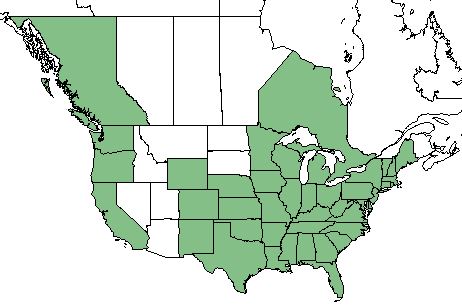Coreopsis lanceolata
Common Names: Lanceleaf Tickseed;[1] Sand Coreopsis;[2] Longstalk Coreopsis
| Coreopsis lanceolata | |
|---|---|

| |
| Photo by the Atlas of Florida Plants Database | |
| Scientific classification | |
| Kingdom: | Plantae |
| Division: | Magnoliophyta - Flowering plants |
| Class: | Magnoliopsida - Dicots |
| Order: | Asterales |
| Family: | Asteraceae |
| Genus: | Coreopsis |
| Species: | C. lanceolata |
| Binomial name | |
| Coreopsis lanceolata L. | |

| |
| Natural range of Coreopsis lanceolata from USDA NRCS Plants Database. | |
Contents
Taxonomic Notes
Synonyms: Coreopsis lanceolata L. var. lanceolata, C. lanceolata L. var. villosa Michaux, C. heterogyna Fernald, C. crassifolia Aiton
Varieties: none
Description
C. lanceolata is a perennial forb/herb of the Asteraceae family native to North America.
Distribution
C. lanceolata is native throughout the United States apart from Arizona, Nevada, Idaho, Utah, Montana, North Dakota, and South Dakota. It is also native in Ontario and British Columbia, and has been introduced to Hawaii and the Pacific Basin.[1] This species is often spread by cultivation, and the original range of the species is obscure.[3]
Ecology
Habitat
C. lanceolata is listed as a facultative upland and obligate upland species, where it mostly can be found in upland communities but uncommonly in wetlands. The ideal habitat for the C. lanceolata is in dry soil with full sun. [1]
Phenology
Flowering of the C. lanceolata has been observed to flower between January and July, with peak inflorescence between March May and April, producing the majority of the buds. [4]
Seed bank and germination
For successful seedlings, a firm seedbed is needed that has been lightly disked. Light plant debris is ideal; more will stifle plant germination. Germination occurs in the fall. [1]
Conservation and Management
Cultivation and restoration
Photo Gallery
References and notes
- ↑ 1.0 1.1 1.2 1.3 USDA Plant Database
- ↑ Goldblum, D., et al. (2013). "The impact of seed mix weight on diversity and species composition in a tallgrass prairie restoration planting, Nachusa grasslands, Illinois, USA." Ecological Restoration 31(2): 154-167.
- ↑ Weakley, A. S. (2015). Flora of the Southern and Mid-Atlantic States. Chapel Hill, NC, University of North Carolina Herbarium.
- ↑ Nelson, G. PanFlora: Plant data for the eastern United States with emphasis on the Southeastern Coastal Plains, Florida, and the Florida Panhandle. www.gilnelson.com/PanFlora/ Accessed: 18 MAY 2018